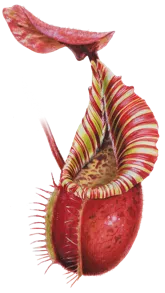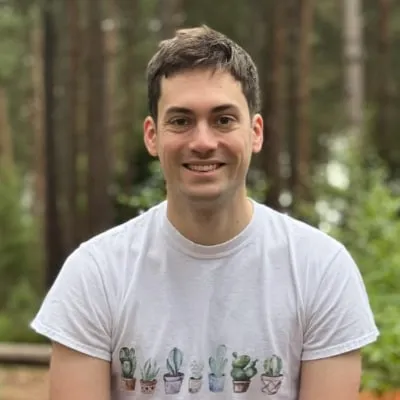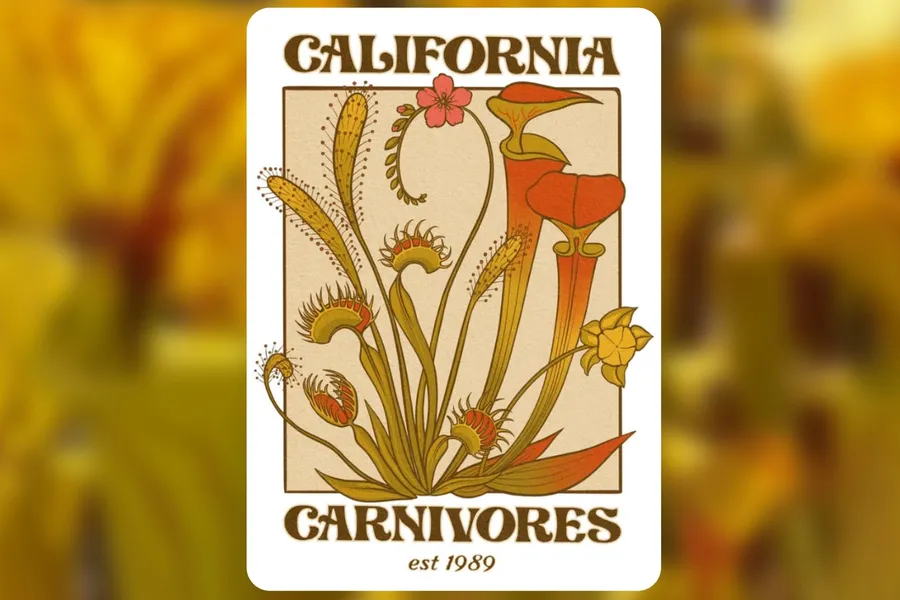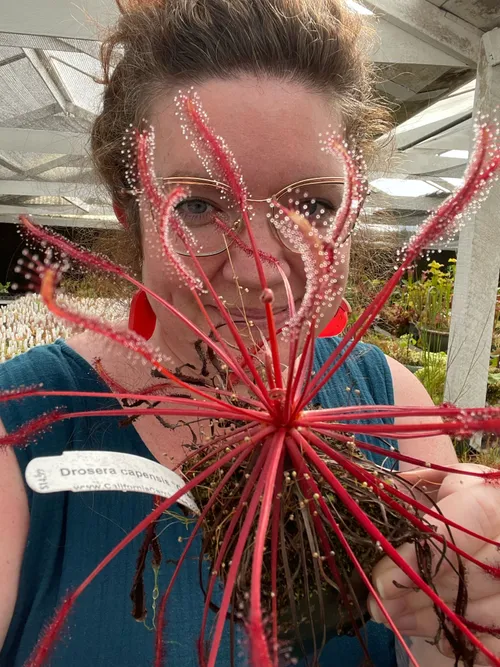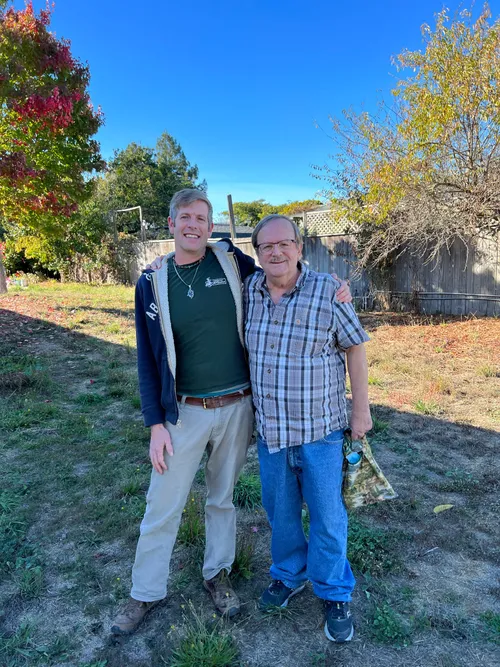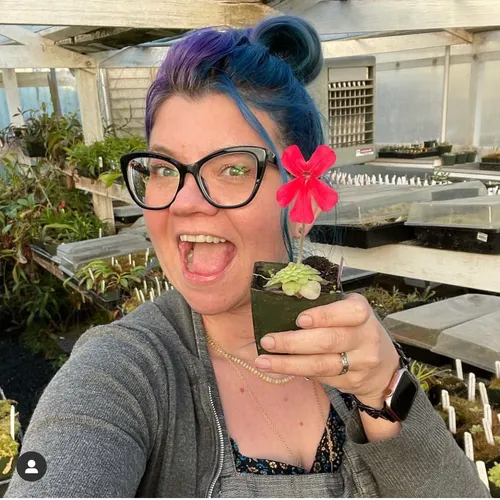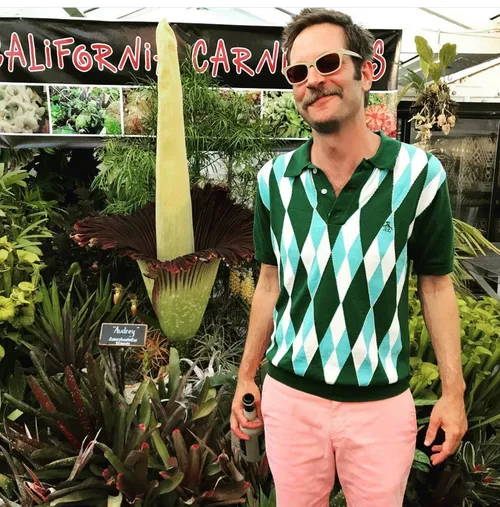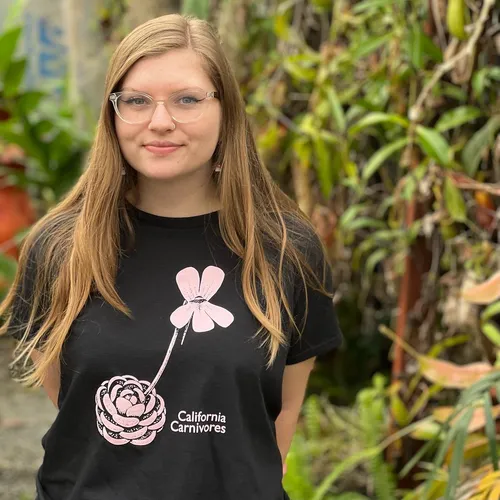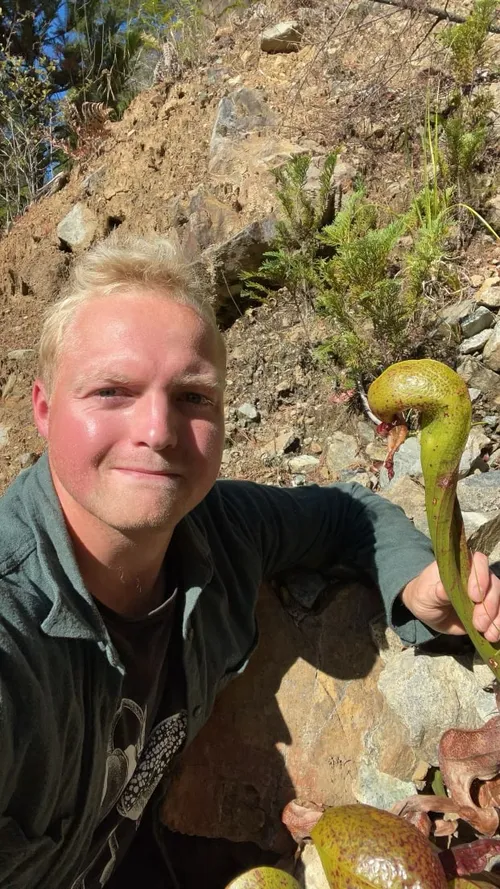When I first spoke to Peter D’Amato back in 2017, it felt like stepping into a childhood dream. His book The Savage Garden was my gateway into the strange world of carnivorous plants, and his generosity - and willingness to chat with a random UK plant blogger - helped set the direction for this site.
In the years since Peter’s passing, his longtime collaborator Damon Collingsworth has taken the reins at California Carnivores — guiding the team through a move, a pandemic, and a new generation of collectors and growers. It felt fitting to return to the nursery years later to speak with Damon, who’s carried Peter’s legacy forward while building something entirely his own.
Enjoy!
Don’t forget, you can get 10% off at California Carnivores by using the code tomscarnivores.
Discovering Carnivorous Plants
Tom: To start with, can you tell me about your role at the California Carnivores, and about how you met Peter D’Amato back in the day?
Damon: Sure. I’ve told this story a lot, but I still love it. When I was a little kid, I always wanted to be a zookeeper. I was immediately fascinated by nature — animals at first — and by how everything connected in food webs. That sense of curiosity never left.
Click on any photo to zoom in. Use arrow keys or swipe to navigate.
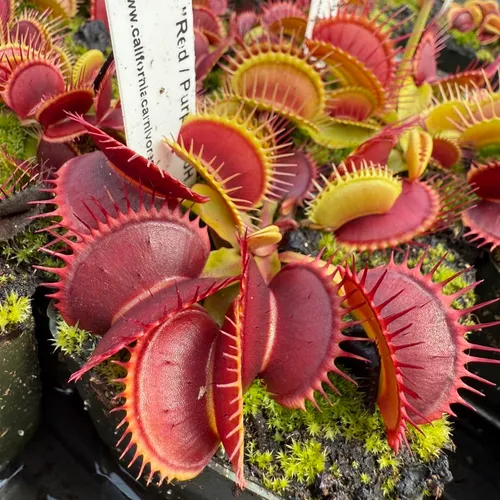 Dionaea muscipula 'Red-Purple'
Dionaea muscipula 'Red-Purple' 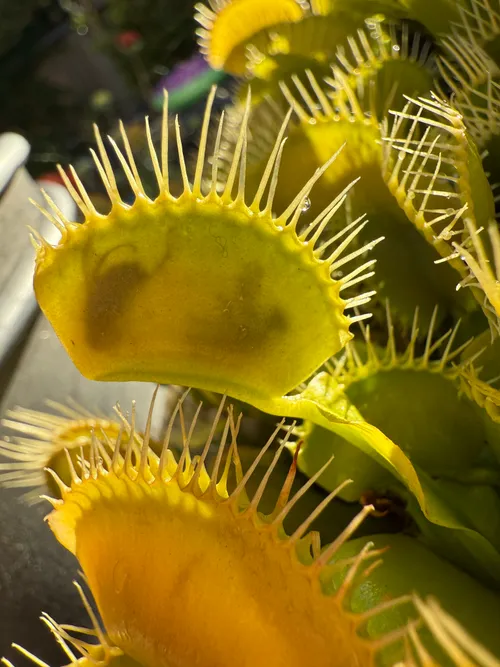 Dionaea muscipula digesting a meal
Dionaea muscipula digesting a meal 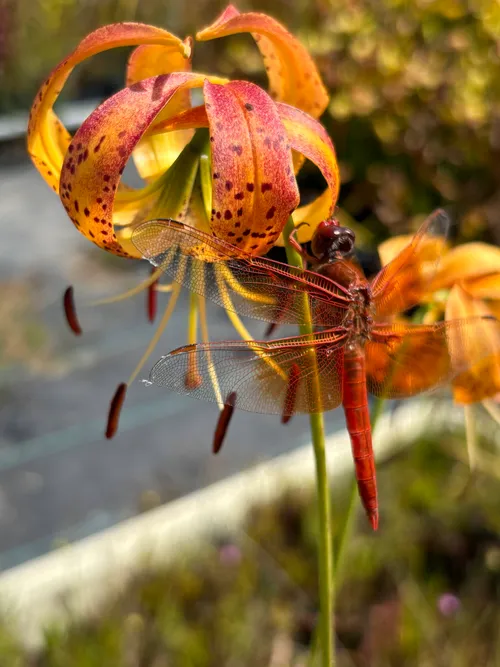 Dragonfly visiting flowers at the nursery
Dragonfly visiting flowers at the nursery 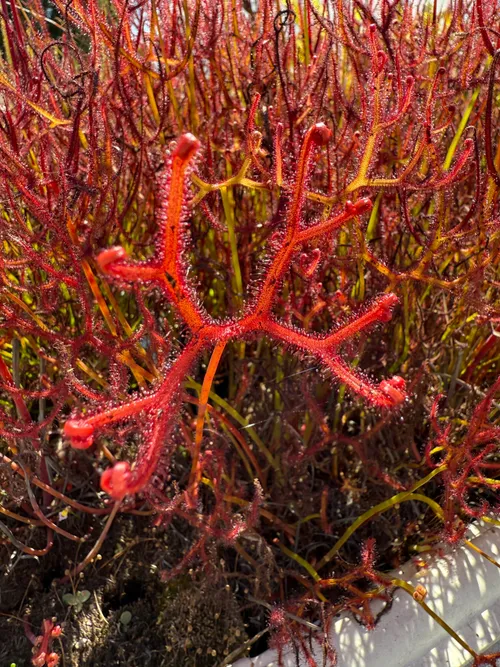 Drosera binata var multifida, fork leafed sundew
Drosera binata var multifida, fork leafed sundew 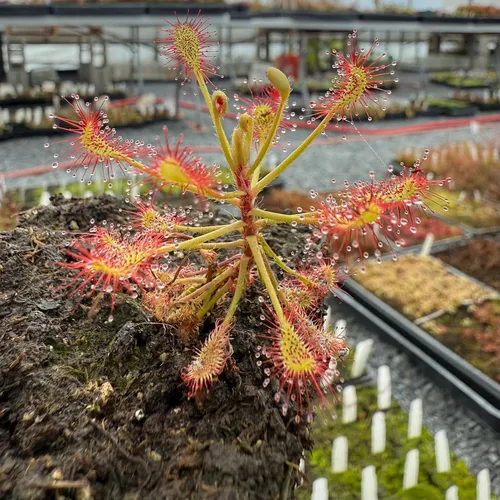 Drosera madagascariensis
Drosera madagascariensis 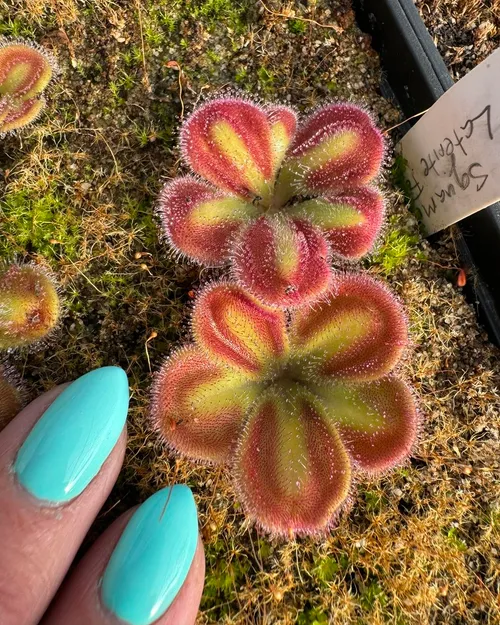 Drosera squamosa
Drosera squamosa 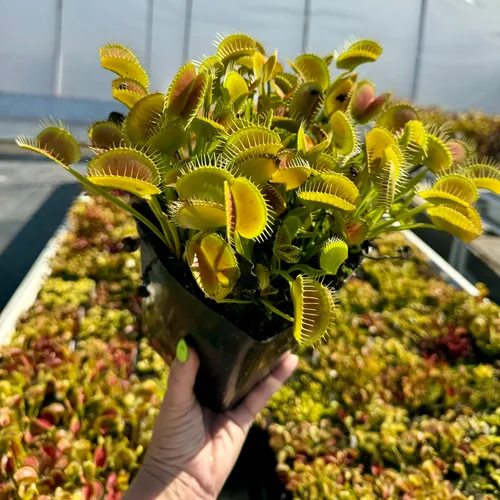 Huge clump of Dionaea muscipula, the Venus Flytrap
Huge clump of Dionaea muscipula, the Venus Flytrap 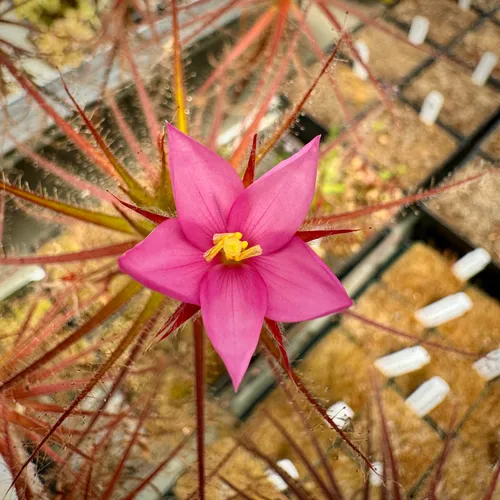 Roridula in flower
Roridula in flower My dad used to sell antiques at flea markets, and I’d wander around looking for interesting things. One day, I came across Peter selling sundews and Venus flytraps. I bought a Cape sundew, and honestly, it changed my life. I’d barely even known carnivorous plants existed, let alone seen one. This was pre-internet — the late ’80s — when information was scarce and most of what you could find came from a handful of old books and National Geographic articles.
Peter opened the nursery in ’89, not far from my house, and by the time I was 14, I was volunteering there. I’d fill pots for ten bucks an hour in plants — a great deal back then. After high school, I became their first full-time employee. Peter taught me everything: leaf cuttings, propagation, all that. It was an incredible experience. I felt like I was part of something important.
Living in Borneo
Tom: How did your time in Borneo come about?
Damon: Many years later, Peter’s friend Ch’ien Lee - of Malesiana Tropicals - came over to visit from Borneo. I overheard him saying to Bill Hoyer that he needed someone to come out and help run the nursery. I jumped at the chance. I was studying botany at college and still living at home. I went home that day and told my parents, “I think I’m moving to Borneo.”
Tom: That must have been quite a surprise!
Damon: Yeah — especially since this was immediately after 9/11. My dad was like, “You’re not going.” But I talked to Ch’ien, and he reassured me it was safe. So I went — delayed by a month, but I went. It took 36 hours to get there. The moment I arrived, I realized how different everything was — the rain, the food, even the squat toilets in the airport!
I stayed for a year. It was a huge cultural and personal shift — no comfort zone at all. But it was also deeply formative. Ch’ien discovered Nepenthes platychila and N. glandulifera while I was there, which was incredible to witness. I helped run Malesiana Tropicals, handling the horticulture side while Ch’ien focused on fieldwork.
It wasn’t always easy. One of the owners of Malesiana Tropicals was… difficult. Think “Gordon Ramsay of horticulture.” He was harsh, and I was young and American — not his favorite combination. But I stuck it out. I lived out on the nursery property in this wild, open-air house — zinc roof, no glass, just shutters. Totally surrounded by jungle. It was rough but magical. Eventually, when my contract ended, I came home. It had been both the hardest and most amazing year of my life.
Tom: That sounds incredible — seeing new species being discovered, and being surrounded by all that biodiversity.
Damon: It really was. Even though I didn’t get to go on as many expeditions as I’d imagined — I spent most of my time fixing the greenhouses — it was unforgettable. Just seeing Nepenthes rafflesiana growing in ditches down the road was surreal.
Soon after I came back, Peter asked me to return to California Carnivores, help rebuild it, and eventually made me co-owner. I’ve been running it since 2009. Peter officially retired about five years ago, and I’ve carried it on since. Honestly, it’s exactly what my eleven-year-old self dreamed of doing.
Click on any photo to zoom in. Use arrow keys or swipe to navigate.
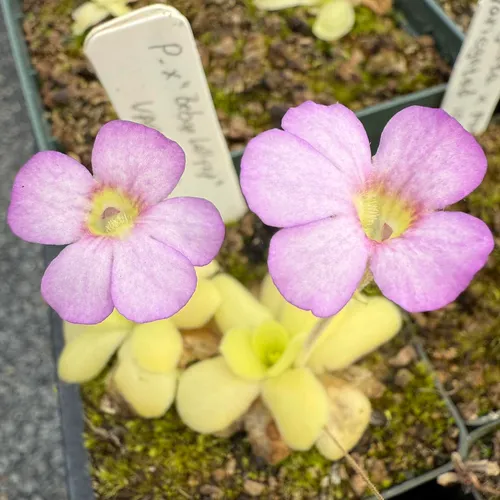 Pinguicula x “Bebop Lollipop”
Pinguicula x “Bebop Lollipop” 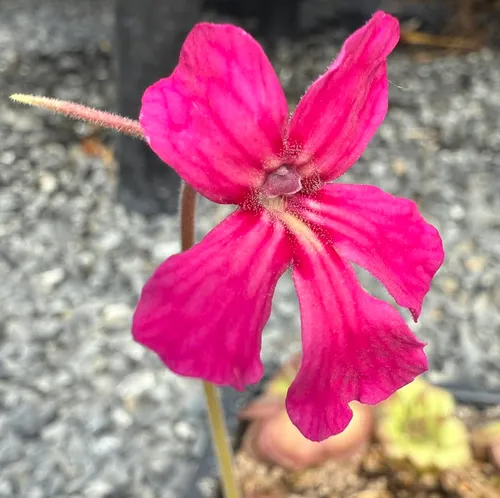 Pinguicula x “Pink Eye”
Pinguicula x “Pink Eye” 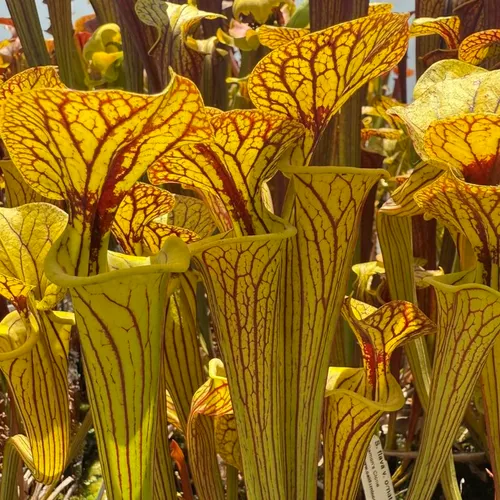 Sarracenia flava var ornata “Bulloch Co, Damon’s Clone”
Sarracenia flava var ornata “Bulloch Co, Damon’s Clone” 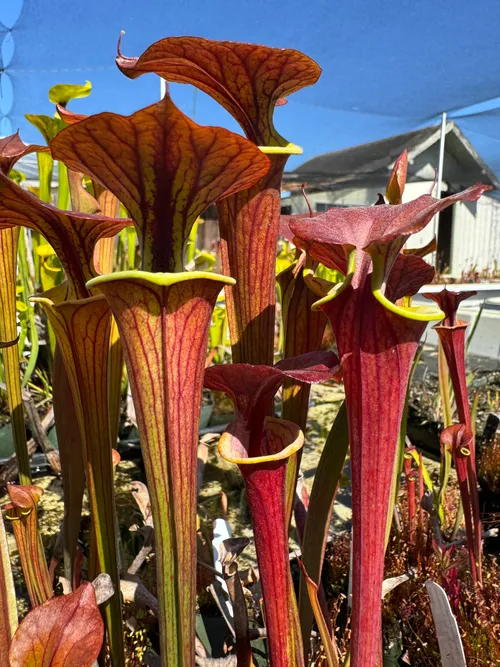 Sarracenia flava, beautiful red tube form
Sarracenia flava, beautiful red tube form 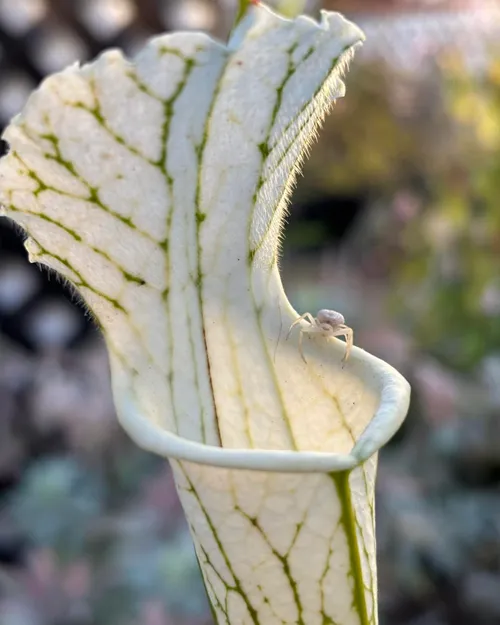 Sarracenia leucophylla, all white
Sarracenia leucophylla, all white 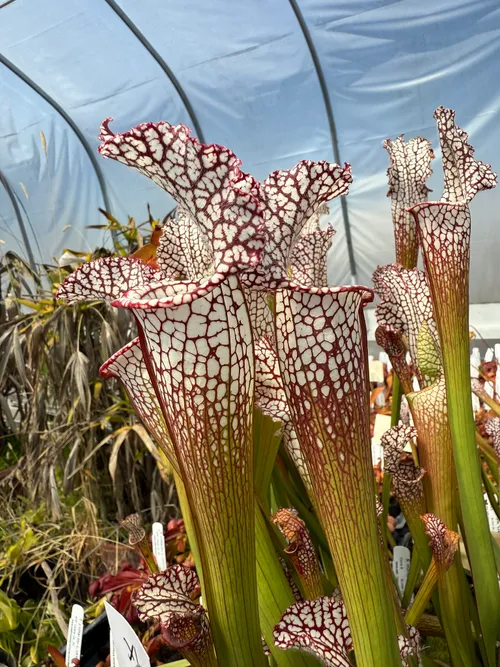 Sarracenia leucophylla
Sarracenia leucophylla 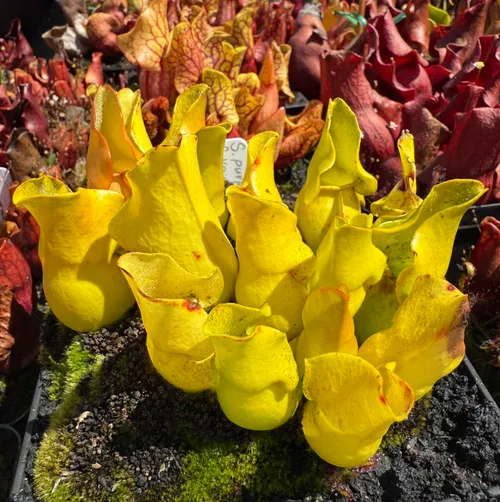 Sarracenia purpurea ssp purpurea “veinless”
Sarracenia purpurea ssp purpurea “veinless” 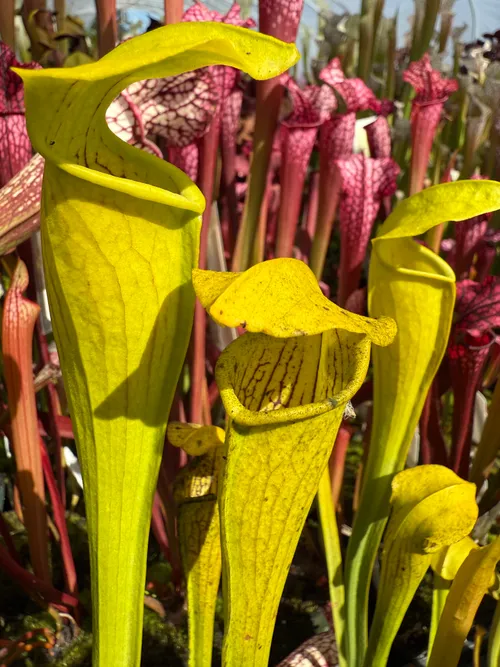 Sarracenia rubra
Sarracenia rubra 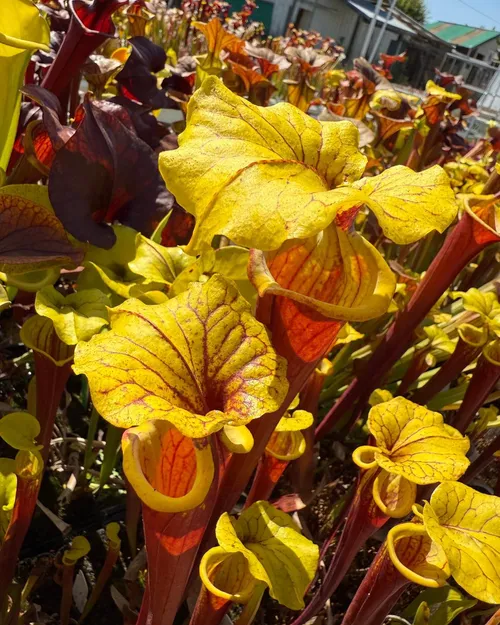 Sarracenia var. rubricorpora “Burgundy”
Sarracenia var. rubricorpora “Burgundy” 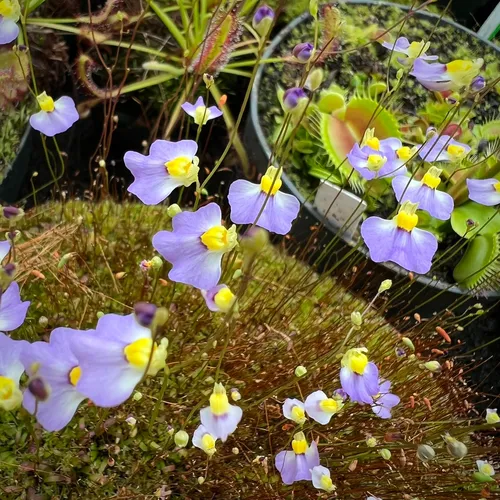 Utricularia bisquamata ‘Betty’s Bay’
Utricularia bisquamata ‘Betty’s Bay’ Going Online and the Pandemic Shift
Tom: You mentioned earlier that the nursery went online-only. How did that transition come about?
Damon: We’d been open to the public five days a week for decades. Right before COVID, we decided to close for just one week to get some maintenance done — putting up benches, reorganizing. That one week was such a relief. We suddenly realized how much time we’d been spending talking to visitors instead of growing plants.
Even before COVID, online orders were outpacing walk-ins, but then COVID hit - the universe made the decision for us. We closed to the public entirely.
At first, I was bracing for a financial disaster. But then, everyone stuck at home started ordering plants. The pet industry exploded, and plants followed suit. Our orders skyrocketed! It was just me and my colleague Daniela running the entire operation for nearly a year — watering, packing, shipping, everything. It was exhausting, but it saved us. Honestly, we’ve never looked back.
Moving the Nursery
Tom: And now you’ve moved, right? To a new property?
Damon: Yes. Our old greenhouse was incredible — 7,500 square feet of grown-in jungle under one roof — but we were renting, and our landlord was, let’s say, difficult. After years of lease battles, I decided we had to move.
It was terrifying — buying land in Sonoma County isn’t cheap — but we found an old chicken ranch just down the road. Totally empty, a blank slate. We flattened it, cleared everything, and rebuilt from scratch. It’s three times the space we used to have. For a while, we ran two locations at once while building greenhouses here. But it’s been worth it.
Around that time, Peter was diagnosed with lung cancer. He’d been like a father to me, so that was very hard. He passed away in June last year. Finishing our new greenhouse felt like closing one chapter and starting another — bittersweet, but beautiful. We finished our first new 3,000-square-foot greenhouse in November and finally brought the whole team and all the plants together here. It’s been a long road, but this really feels like home.
Click on any photo to zoom in. Use arrow keys or swipe to navigate.
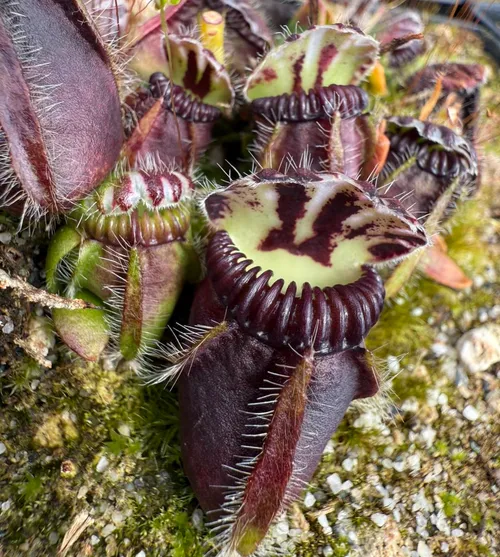 Cephalotus follicalaris
Cephalotus follicalaris 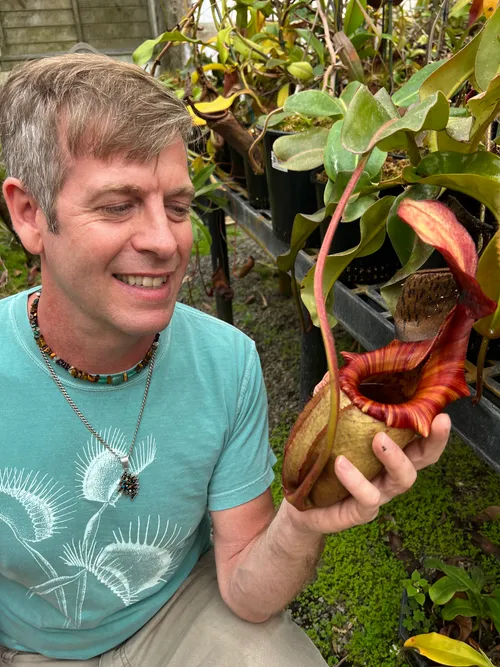 Damon with N. rajah x veitchii
Damon with N. rajah x veitchii 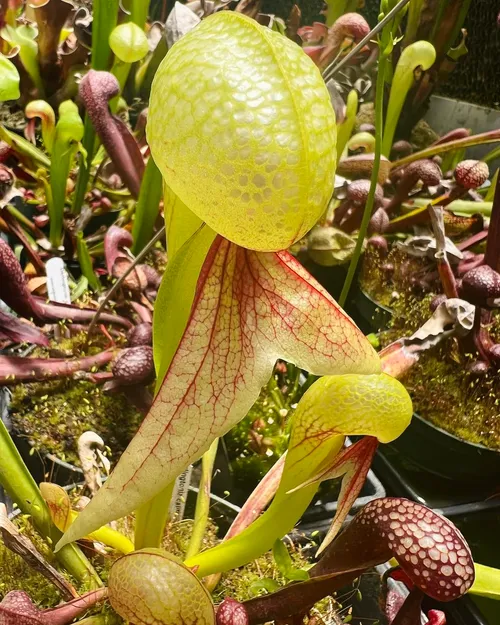 Darlingtonia californica
Darlingtonia californica 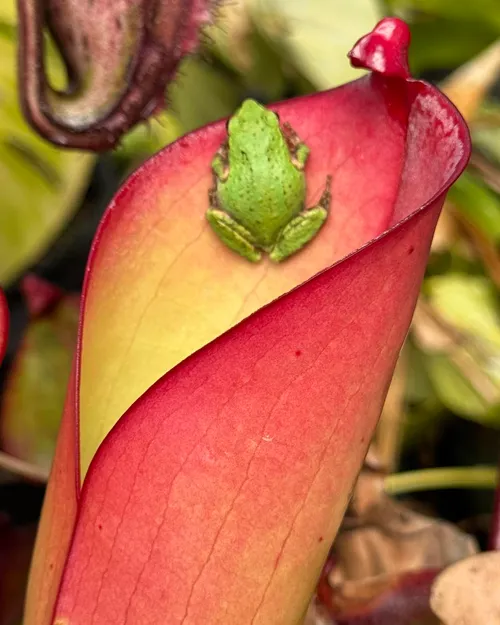 Heliamphora visited by Pacific chorus frog
Heliamphora visited by Pacific chorus frog 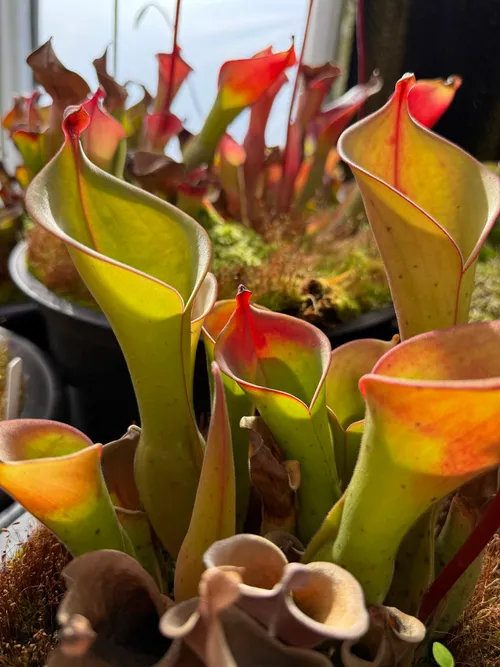 Heliamphora, the 'sun pitchers'
Heliamphora, the 'sun pitchers' 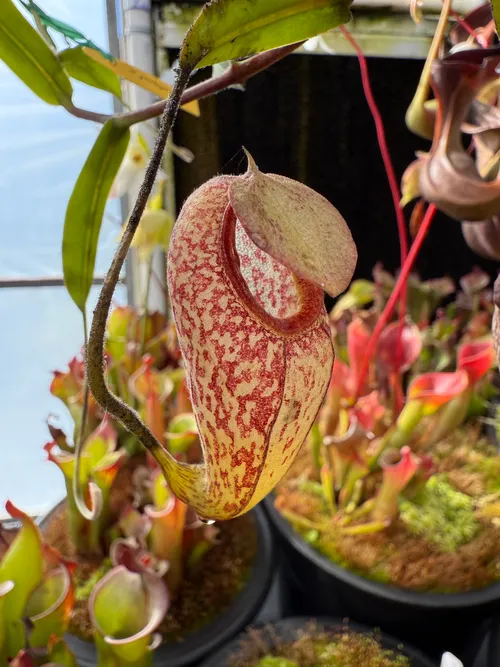 Nepenthes aristolochioides
Nepenthes aristolochioides 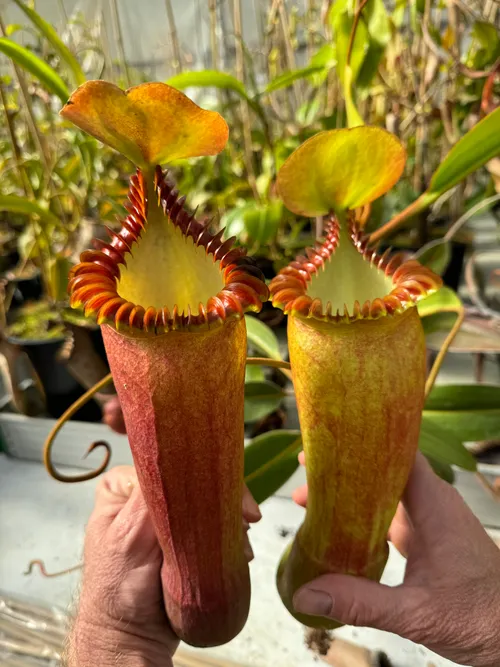 Nepenthes edwardsiana pitchers
Nepenthes edwardsiana pitchers 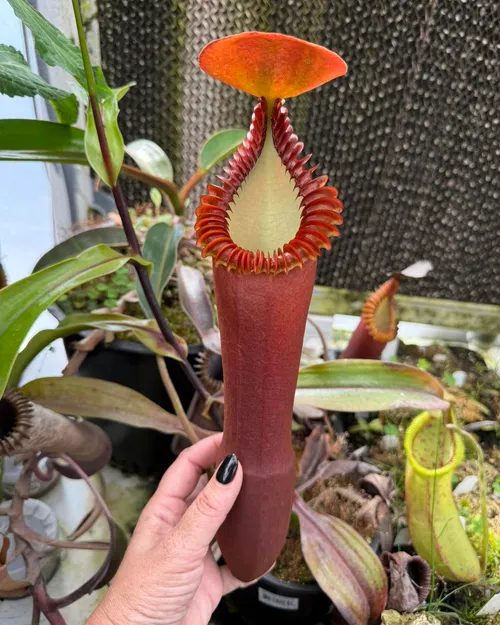 Nepenthes edwardsiana
Nepenthes edwardsiana 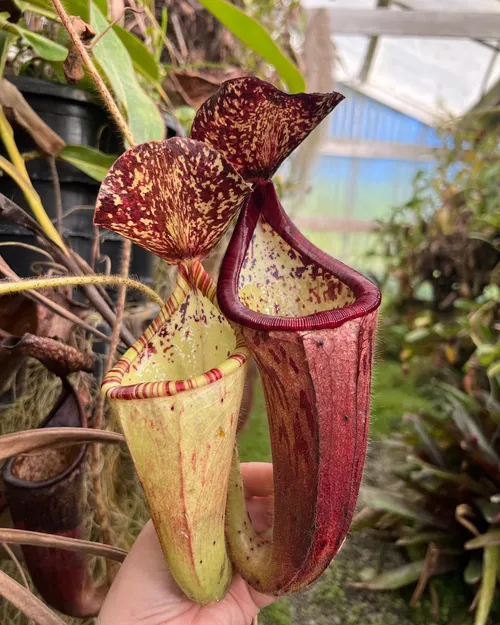 Nepenthes glandulifera
Nepenthes glandulifera 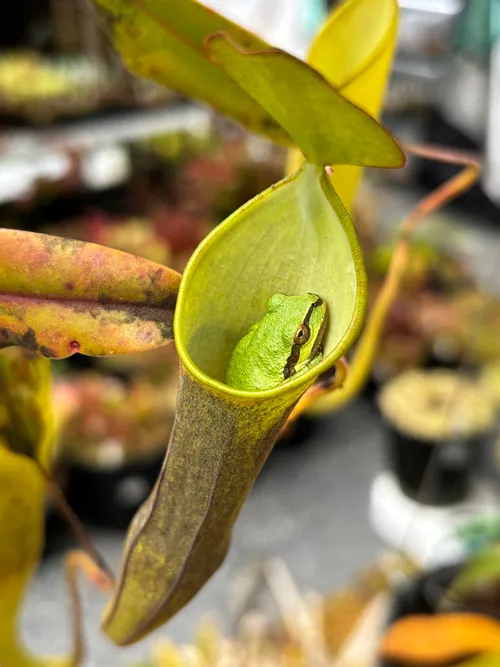 Nepenthes mikei, with a visitor
Nepenthes mikei, with a visitor 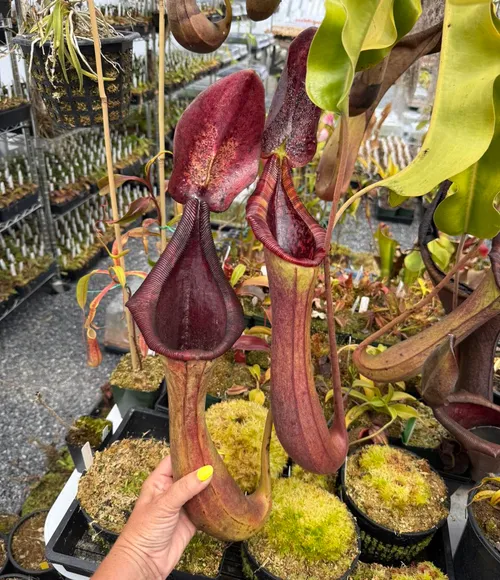 Nepenthes truncata x lowii
Nepenthes truncata x lowii 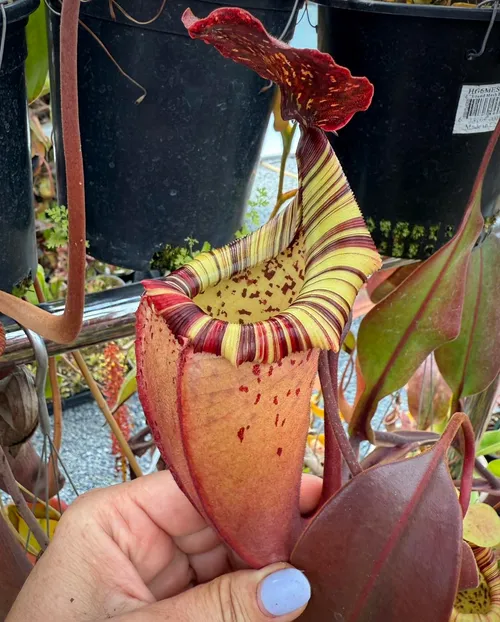 Nepenthes veitchii x burbidgeae
Nepenthes veitchii x burbidgeae Current Work and Breeding Projects
Tom: That’s an incredible journey. Now that you’re all set up, what’s your focus these days? From your videos, it seems like you’re always busy, be it breeding Nepenthes, working with Pinguicula, propagating Sarracenia…
Damon: Yeah, I’m always juggling about a hundred things at once. Right now, I’m transplanting the entire Pinguicula collection before winter. I’m also collecting Sarracenia seeds — I make around 500 crosses a year, which is a huge task on its own. Plus, we’re still building and reorganizing greenhouses, putting in benches, that sort of thing.
On the breeding front, some exciting stuff: I had a female N. macrophylla bloom, and we’re attempting to make pure species seed for the first time. Luckily I’d just acquired a male that was also flowering, so the timing was perfect. We also had some N. lowii pollen, so assuming the crosses take, we’ll have made:
- N. macrophylla (pure)
- N. x trusmadiensis (i.e. N. macrophylla x lowii)
- N. macrophylla x edwardsiana
- N. macrophylla x hamata
We also have two N. undulatifolia coming into flower right now - to soon to tell the gender, but I’m hoping one of each! We also have N. pitopangii flowering.
I’m really excited about backcrossing right now, so we’re making:
- N. (lowii x jacquelineae) x lowii
- N. (ventricosa x lowii) x lowii
- N. (lowii x inermis) x lowii
These should all look quite like N. lowii but grow a lot easier. It’s been a great flowering year. We’ve also been putting a lot more into tissue culture, so hopefully many of these crosses will be available to the public in the coming years.
Tom: That’s amazing, especially the N. macrophylla. You so rarely hear of anyone managing to flower that species in cultivation. That’s a huge achievement.
Damon: It’s taken decades. I have seven N. lowii with upper pitchers, all of them in the 20-25 year-old range, and this is the only one that’s flowered so far. Patience is everything in this game.
The Team and Tissue Culture
Tom: You mentioned tissue culture — do you have a lab on-site?
Damon: Off-site, but it’s ours. It’s run by our longtime colleague Mike Wilder, and it handles flytraps, Pinguicula, and Nepenthes, while everything else is still propagated the old-fashioned way.
Tom: And how big is the California Carnivores team now?
Damon: Usually about ten to twelve people. Small, but mighty.
Click on any photo to zoom in. Use arrow keys or swipe to navigate.
Favorite Plant and Closing Thoughts
Tom: Final question — I ask everyone this. What’s your favorite plant right now?
Damon: That’s impossible! Peter used to say, “Whichever one I’m looking at,” and I think that’s the best answer. But if I had to choose, probably Cephalotus. It’s so alien and beautiful — and I’ve always loved Australian plants. Still, the truth is I love them all. The diversity is what inspires me most.
Tom: I agree, and it’s why my greenhouse is overflowing.
Damon: Exactly. And honestly, it’s such a joyful way to live. So many people chase happiness through consumption, but growing plants gives you something deeper — a kind of self-sustaining machine. Every seedling, every new flower is a little gift from your past self. It’s both art and science — you’re painting with genetics, and nature often surprises you with beauty you couldn’t have imagined. It’s the best game I could ever play.
Thanks to Damon Collingsworth and the team at California Carnivores. Be sure to follow California Carnivores on Instagram and YouTube.
